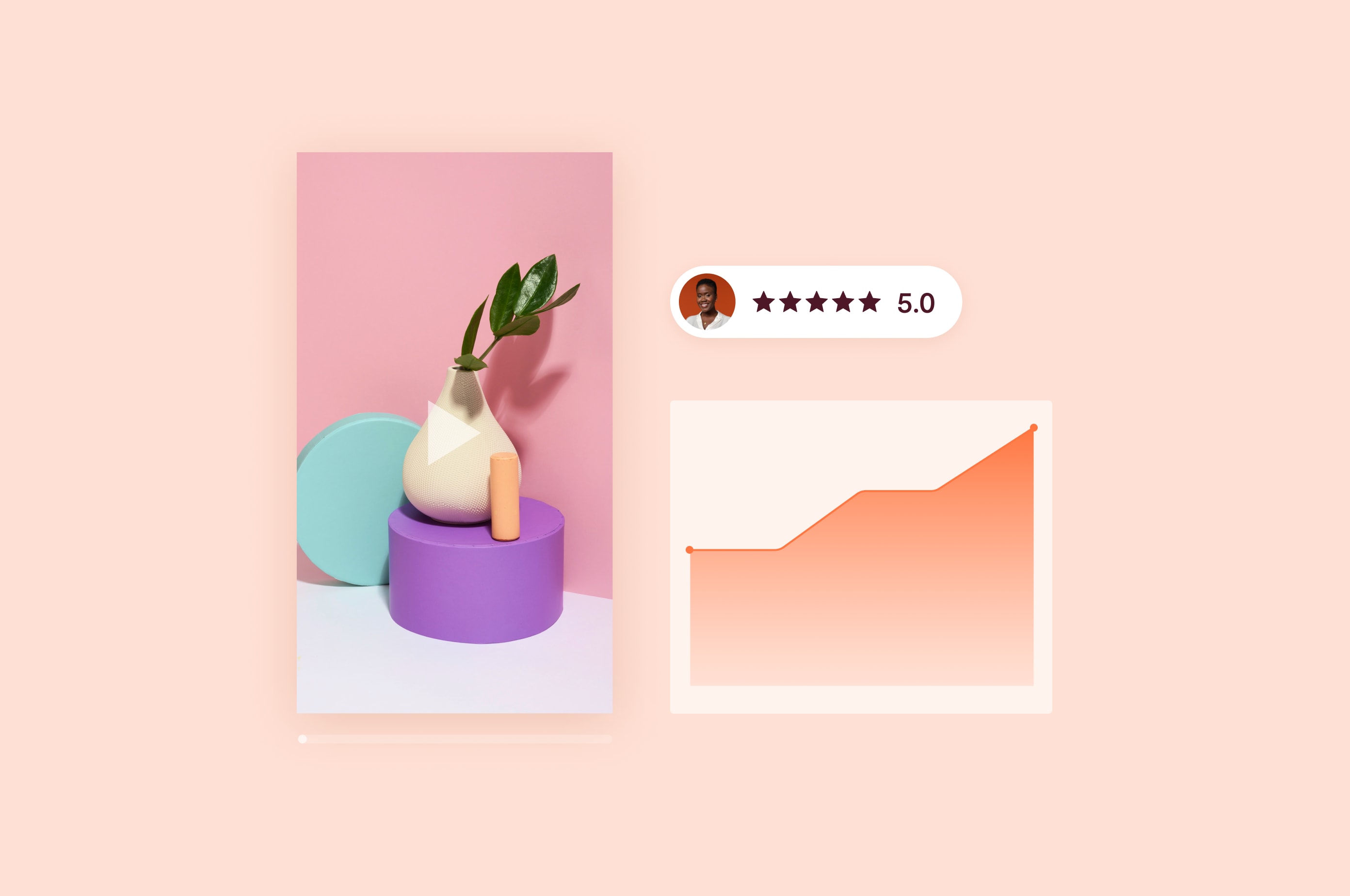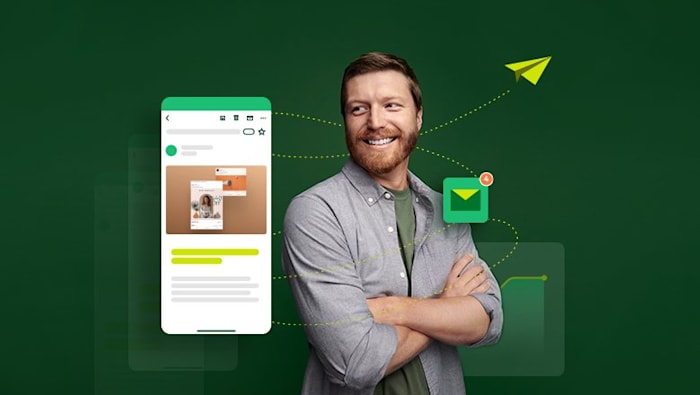Marketing Channels: Types & How to Choose
A comprehensive guide to selecting and optimizing marketing channels for growth.
 April 17, 2025
April 17, 2025 9 minute reading
9 minute reading
In today's digital age, you have countless marketing channels at your fingertips. But how do you decide which ones are right for your business? Choosing the wrong channel could end up wasting your time, money, and effort.
This guide will break down the most effective digital marketing channels and show you how to prioritize them according to your goals, target market, and budget. Moreover, we'll discuss how you can find top marketing pros on Fiverr to help with your channel strategy.
What are marketing channels?
Marketing channels are simply the different ways businesses connect with customers. Whether it's a social ad, a blog post, or a billboard, each one helps guide potential buyers along the way.
To stay competitive, today's brands blend digital and traditional marketing. For example, Under Armour pairs engaging online videos and athlete-focused social media ads with targeted email campaigns that offer exclusive deals, product updates, and workout tips. Their in-store displays mirror these campaign themes, matching their online promotions.
With the right strategy, these platforms benefit businesses in the following ways:
Generate leads: The most effective distribution channels match your audience demographics. Brands can convert leads faster by reaching consumers on their favorite platforms.
Improve customer engagement: Interaction is the simple yet vital ingredient in delighting consumers. Personalized and timely messages make clients feel understood and valued.
Drive sales: Positive customer experiences result in repeat purchases, higher customer acquisition, and loyal clients.
Showcase creativity: Brands can display their creative content in text, audio, image, and video formats.
Establish competitive positioning: Analyzing consumer data and content performance from each channel can improve your decision-making and market position.
Traditional vs. digital channels
Marketing channels can be offline (traditional) or online (digital). Here’s a chart that outlines examples and use cases for traditional and digital marketing:
You can use a blended channel strategy to reap the benefits of both categories. At the same time, you should keep tabs on traditional media as they evolve. For instance, TV sets can now stream video from the Internet. Many radio stations also stream their programs online. Expert professionals on Fiverr can help you navigate these evolving channels and help you create a well-rounded strategy.
What are the top marketing channels?
Choosing your marketing channels is an essential facet of a solid content strategy. Here are the leading platforms in the digital marketing landscape:
Social media marketing
Social media (91%) stands alongside websites and apps (91%) as the top marketing channel worldwide, according to Statista.
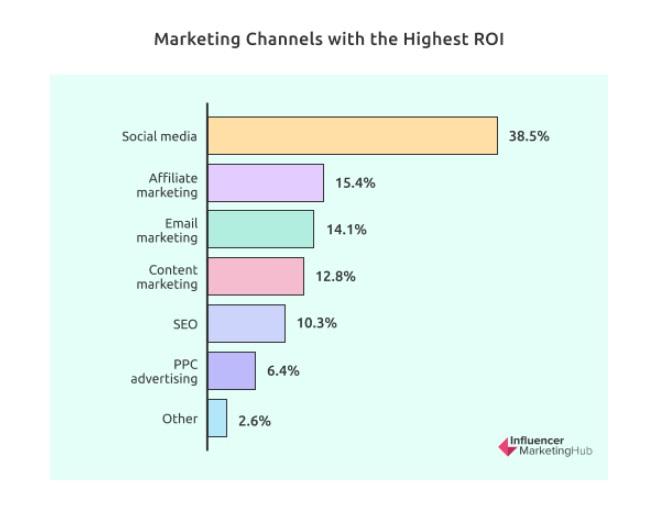
Influencer Marketing Hub
According to Influencer Marketing Hub's 2024 report, social media has the highest ROI out of all digital marketing channels.

Statista
Another Statista report shows Facebook, Instagram, LinkedIn, YouTube, TikTok, and X/Twitter were the favorite social marketing channels in 2024.
Facebook and Instagram are great for visually driven ads, while LinkedIn’s strength lies in B2B marketing. Meanwhile, TikTok engages audiences with short-form videos, creative content, and viral campaigns.
It may be tempting to have a presence on all these channels. But, search and content marketing expert and influencer Neil Patel says, "Engagement is the more important aspect of a social media presence rather than disengaged posts across several social media platforms."
What types of engagement strategies draw the highest response on social media? The most effective ones include:
Incentives: Giveaways, contests, exclusive discounts, early access.
Challenges: User-generated content.
Interactive posts: Q&A sessions, polls, and quizzes.
Educational posts: How-to guides, industry insights, tips/did-you-know, FAQs.
Behind-the-scenes content: Event preparation, product development, customer success stories.
Find a Social Media Marketing Expert for Hire
Search engine optimization (SEO)
SEO refers to techniques applied to online content for a website to rank high in search engines. Thus, marketers also refer to this channel as organic search marketing. With 33% of website traffic coming from organic search, according to Conductor's 2024 report, SEO helps businesses attract qualified leads and build brand authority.
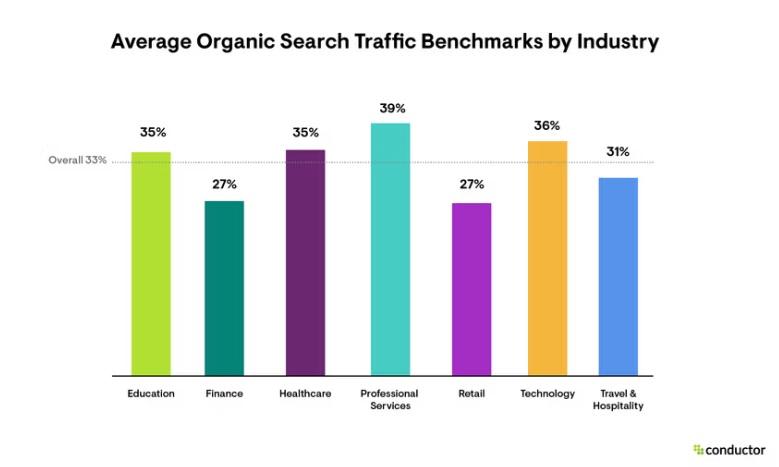
Conductor
SEO uses a multi-faceted approach to bring "inbound" traffic to your site or landing page. SEO services involve on-page and off-page SEO.
On-page SEO includes actions you take on your website to boost its search ranking, while off-page SEO involves efforts outside your site. Together, they help you meet key ranking factors and improve visibility.
On-page SEO makes it easier for search engines to understand your pages through:
Title tags: The main title of a webpage that helps search engines and users understand its content.
Meta descriptions: A brief summary that appears in search results, influencing click-through rates.
URL structure (information hierarchy): The way URLs are organized to improve readability and SEO.
Heading tags: HTML tags (H1, H2, etc.) that structure content and improve readability.
Image alt text: Descriptive text for images that enhances accessibility and SEO.
Internal links: Links within a website that connect related pages and improve navigation.
Meanwhile, off-page SEO is necessary to maintain a positive online reputation through:
Backlinks: Links from other websites that boost your site's authority and SEO.
Google Business Profile: A local listing that helps businesses appear in search and maps.
Social media marketing: Promoting content and engaging audiences on social platforms.
Reviews management: Monitoring and responding to customer reviews to build trust.
Guest blogging: Writing articles for other websites to gain exposure and backlinks.
Influencer outreach: Partnering with influencers to expand brand reach and credibility.
Some of the top ranking factors search engines use when displaying results include:
Relevant content: High-value information that meets user intent and boosts engagement.
High-quality backlinks: Trusted links from authoritative sites that improve SEO.
Keyword integration: Strategically placing keywords to enhance search visibility.
User experience/technical SEO (page speed, mobile-friendliness): Optimizing site performance for better usability and rankings.
Secure website (SSL certification): Encrypting data to protect users and improve trust.
Social signals (likes, shares, and social interactions your website content receives): Engagement metrics that indicate content popularity and influence SEO.
For expert assistance with all aspects of SEO, you can connect with skilled SEO professionals on Fiverr.
Hire an SEO expert on Fiverr
Paid advertising
Compared to organic marketing, paid advertising can quickly attract audiences to your website. Why? Ad platforms let you set demographics and keywords to personalize content. Advertisers "bid" or set how much they spend per action. Higher bids get priority placements on search engines or social media feeds.
Here are the main types of advertising:
Search ads: Text-based ads on search engines that operate on a pay-per-click structure.
Other types of ads that appear on search engines include:
Local service ads: Ads of stores and service providers near the consumer’s physical location
Shopping ads: Product-based ads that appear in a carousel format
Display ads: Image, video, or other interactive element across a network of websites like Google Display Network.
Social media ads: Ads on social platforms typically featuring a static image or a carousel.
In-app and SMS ads: Advertise your brand on mobile devices.
PPC's main advantage over SEO is almost immediate results. You gain immediate visibility, especially for highly targeted campaigns. This means PPC also works best for seasonal and limited-period campaigns.
For long-term ROI, SEO is the way to go. Although it takes time to build, you can accumulate more website visitors once you've established online credibility. Moreover, no bidding wars exist in SEO, unlike ads.
Find a SEM expert
Email marketing
Email marketing is the second most preferred channel of small to medium-sized businesses (53%) based on Constant Contact’s "The Current State of SMB Marketing" report. Cost efficiency (30%), the target public's familiarity with the medium (22%), and easy implementation (36%) were the top reasons.

Constant Contact
SparkToro co-founder Rand Fishkin said, "I would rather have one email address of a potential customer than 1,000 more Facebook followers." He told Ungated Conversations that emails have an average open rate of around 20%. The figure is "phenomenal" compared to Facebook's engagement rate (0.09%) and the average Google ad click-through rate (3.5% to 4%).
However, 40% of consumers in the US alone have unsubscribed due to marketing fatigue, according to eMarketer. Personalized, relevant, and well-timed emails can prevent overwhelming recipients.
Email marketers can streamline operations through these best practices:
Audience/recipient segmentation: Categorizing contacts to send targeted and relevant messages.
Integration with your work/content calendar: Aligning communication with planned projects and campaigns.
Automation of repetitive tasks: Streamlining message sorting, filtering spam, and handling routine responses or follow-ups.
Hire an email marketing specialist to improve conversions and sales
Influencer marketing
Influencers in your niche can convince your target audience to support your brand. Sprout Social reports that nearly half of buying decisions are the results of an influencer's post. The demand for nano- and micro-influencers is high as their higher engagement translates to more sales and brand loyalty.
Affiliate marketing
In affiliate marketing, a business creates an affiliate program whose members (called affiliates) receive a commission for promoting their goods and services. The brand partners use a trackable link in their social media channel, blog, or email newsletter.
It's a performance-based channel where rewards depend on any of the following:
The number of clicks
Pay-per-lead (newsletter subscription or contact form completion)
Pay-per-sale (a percentage or set amount for every purchase)
The average earnings of affiliate websites is $149.76 for every 1,000 visitors, based on a 2024 Authority Hacker poll.
Content marketing
Content marketing is creating and distributing valuable content to attract organic traffic. It educates and entertains them for long-term relationships rather than using ad tactics. Examples include the following:
Blog posts or articles
Short- and long-form videos
Podcasts
Infographics
eBooks
Whitepapers
Webinars
Video marketing
Content pieces aim for brand awareness and conversions by solving problems or sharing insights about other consumers. GrowthLoop co-founder David Joosten says in his blog, "Especially in B2B spaces, content marketing can expose right-fit customers to a brand for the first time, deepen their relationship, and establish the company as a leader in its space."
AI in content marketing helps address rising content needs, according to HubSpot's 2025 report. Around 67% of small businesses already use AI for content and SEO, based on a separate research by Semrush. To use AI effectively for content creation and SEO, you can connect with expert professionals on Fiverr who specialize in these areas.
Find a content marketing strategist for hire
Emerging channels
Marketing strategists are increasingly using channels initially intended for customer support and entertainment. They include:
AI-powered chatbot marketing: Conversational AI for 24/7 personalized engagement.
Voice search optimization: For smart speakers and other voice-activated devices. It banks on local SEO and natural language queries.
Visual SEO: Optimizing images for Google Lens, Amazon's StyleSnap, and similar platforms.
Live shopping: Real-time video streaming on social apps or dedicated e-commerce web pages.
AR/VR marketing: Engages customers through virtual try-ons, virtual showrooms, and interactive displays.
How do you choose the right marketing channels?
The right channels can strengthen relationships, refine campaigns, and make cross-channel marketing successful. To determine which channels will work well for your brand, follow this selection framework:
1. Define your business goals
Here are some marketing objectives and the most effective channels to achieve them:
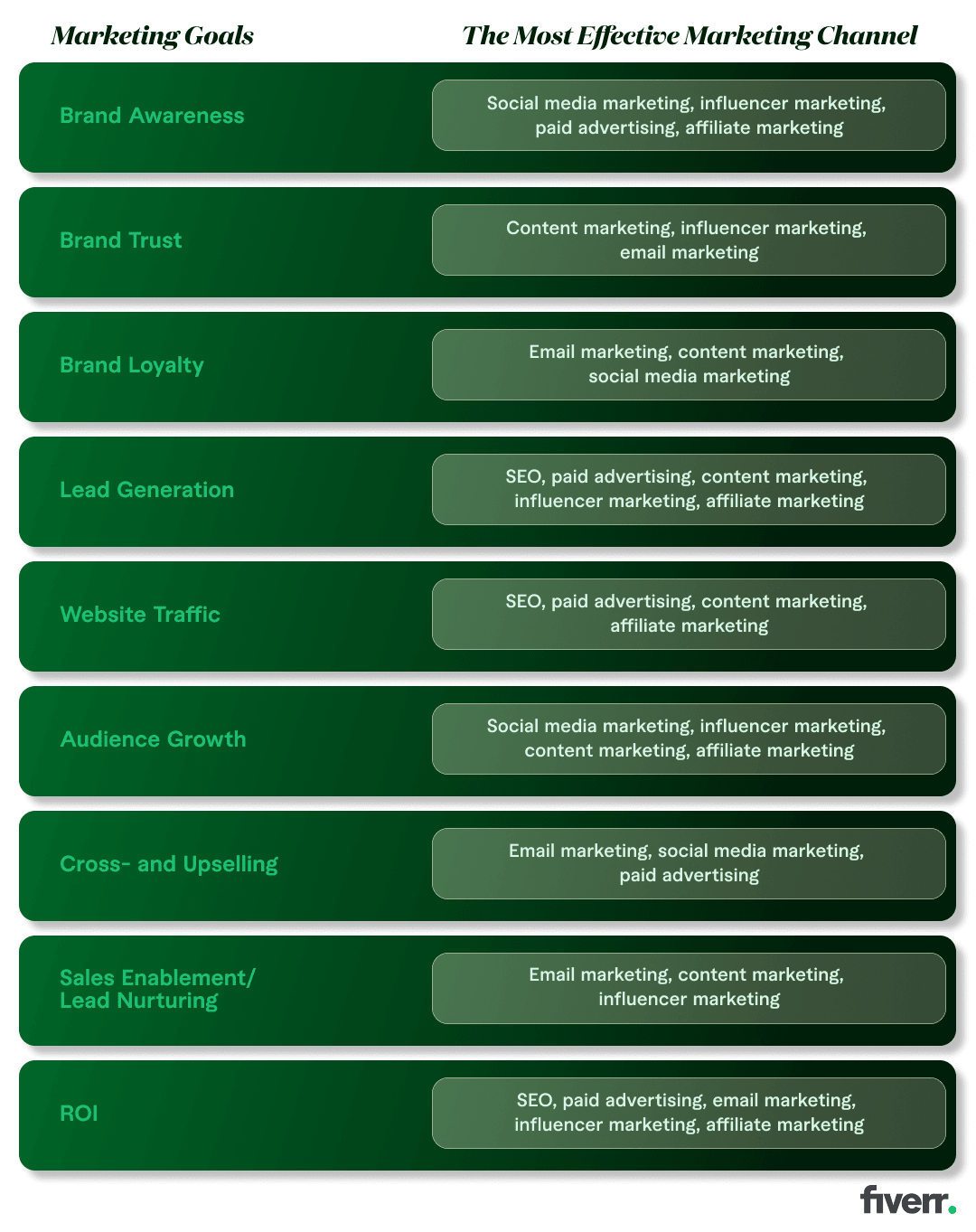
Fiverr
Study your channel options based on:
Compatibility with your product or service: Determining if you need product descriptions or demos.
Reach: Evaluating geography and audience size.
Engagement potential: Assessing how well the channel connects with your audience.
Cost-effectiveness: Weighing the investment against expected returns.
Competitor analysis is also necessary for goal-setting. What channels are they using, and where are they succeeding? Examine their tactics and see if their approaches work for your business.
The waiting time to see the outcomes varies from one channel to another. For instance, paid ads can generate leads almost immediately. Meanwhile, SEO takes several months to deliver ROI. After defining your objectives, establish key metrics and criteria for measuring success.
2. Research your target audience’s preferences
Your chosen platform's audience should align with your business's demographic. As Streamline Results CEO Jonathan Johnson points out, "The platform should provide access to the right audience based on factors like age, interests, behavior, and geography to maximize relevance and ROI for the campaign."
Conduct market research to learn more about your audience's preferences and behavior, particularly:
Where they spend most of their time online
The types of content and topics they're interested in
The online personalities they follow
How they consume content (viewing habits/patterns)
Surveys, customer feedback, and sign-up forms can help collect demographic and other data. Then, conduct audience segmentation to refine your channel matching.
3. Set your budget
Your budget should reflect available resources and the costs to reach your goals. Some channels may be more expensive than others. For instance, online ads can be pricey, while organic posting on social media is free.
Consider the cost of marketing activities to select affordable channels. Additionally, compute the expected ROI to determine cost-effectiveness.
Match goals with the best-performing channel. Follow Patel's advice, "Limit your presence to the online marketing platforms that will help you connect with a majority of the audience... Then, find the platform that gets you the most profit per hour."
4. Identify your current resources
Understand your existing resources and what you need to achieve your target outcomes. Assess whether you have the time and personnel to create and manage content creation for your chosen channels.
Continue to test and adjust your channel strategy. You can pilot or conduct small-scale tests to check a channel's effectiveness. Based on your findings, you can repeat and pour your efforts into the channel yielding the highest results.
Cross-channel/multichannel marketing
Although using all platforms is unnecessary, you need to be on channels that can reap the most benefits for your business. Trying new channels is also timely when you've depleted your current platform's potential and your leads and ROI are declining. But without a cross- or multichannel marketing plan, you risk having fragmented and confusing messages.
Author and digital marketing pioneer Ann Handley calls for "creative consistency." She says, "Chaos comes when we don't create recognition and affinity through voice, messaging, and visuals—across any channel you own or don't. Said another way: "When your TikTok looks gloriously relatable but the homepage looks like legal wrote it."
Stay consistent by using a unified content calendar that outlines messaging across platforms. Repurpose content, tailoring one piece for various channels. Moreover, avoid sacrificing retention and engagement strategies for customer acquisition efforts.
Hire marketing professionals on Fiverr
If navigating these different marketing channels still seems complicated, look no further than the Fiverr Marketplace. You'll find Fiverr pros for every channel and stage of your campaign, from crafting a marketing strategy for channel-to-customer fit to content development and management. Don't know where to start? Fiverr’s Pro verified sellers can help with your enterprise-level marketing needs, from SEO audits to social media management.
On Fiverr, you can discover project-based pricing for better budget control and marketing packages tailored to different business sizes. You’ll have direct communication with marketing experts, access to seller reviews and portfolio examples, and the ability to request custom offers for your specific marketing needs. Additionally, with Fiverr Pro, you can gain access to premium business tools that help you simplify team collaboration and seamlessly execute projects.
Marketing channels FAQs
What are the types of marketing channels?
Marketing channels can be traditional/offline media (print, billboard, or TV) or digital/online platforms (email marketing, social media marketing, SEO, etc.). Each channel offers unique advantages depending on your business and desired outcome.
What is the best channel for marketing?
The "best channel" depends on your business goals, target audience, budget, and resources. PPC is effective for immediate sales. Meanwhile, SEO and content marketing are the most effective channels for long-term growth. Many businesses use a multichannel approach to optimize results.
What are the 8 types of digital marketing channels?
The eight major digital marketing channels are:
Social media
SEO
Paid advertising
Email marketing
Influencer marketing
Affiliate marketing
Content marketing
Emerging channels
What are the 5 functions of the marketing channel?
The five functions of marketing channels also define the benefits you can derive from them:
Generate potential customers
Improve customer engagement
Drive sales
Showcase creativity
Establish competitive position
